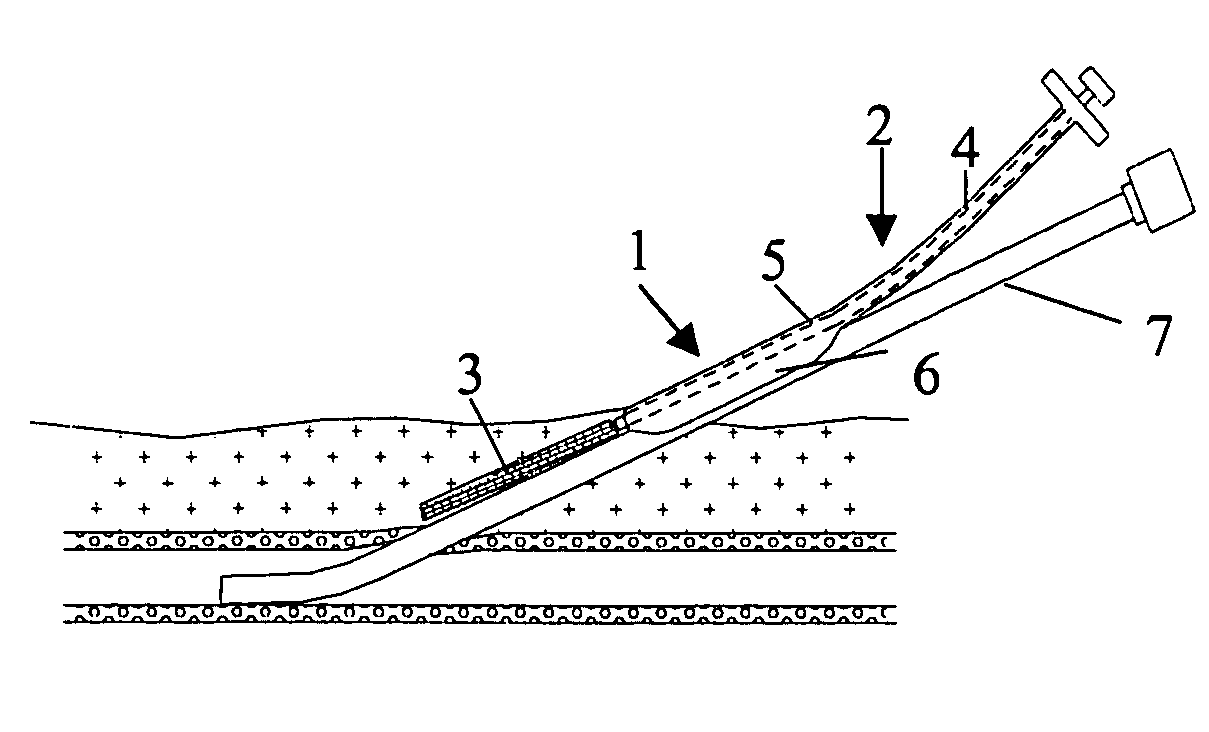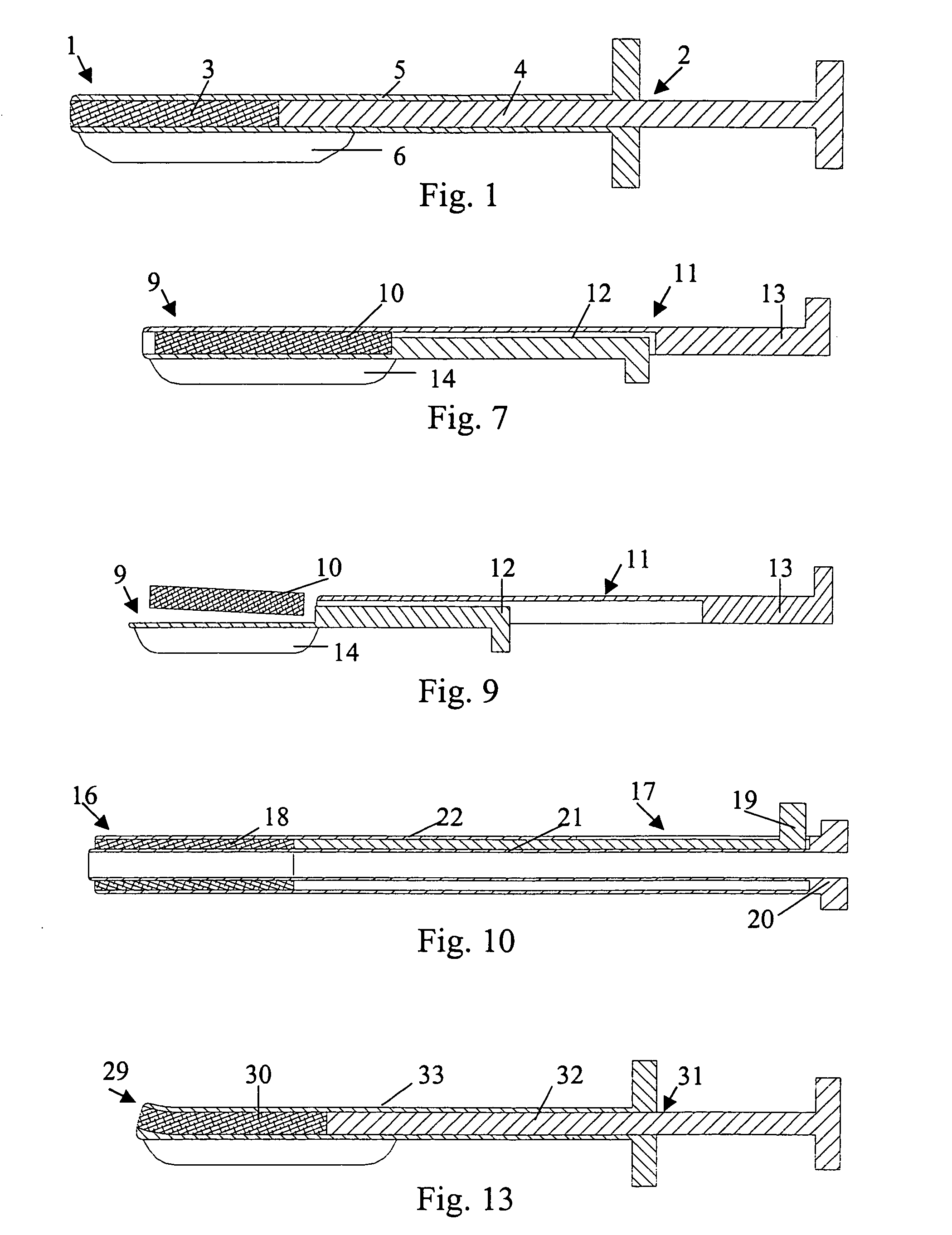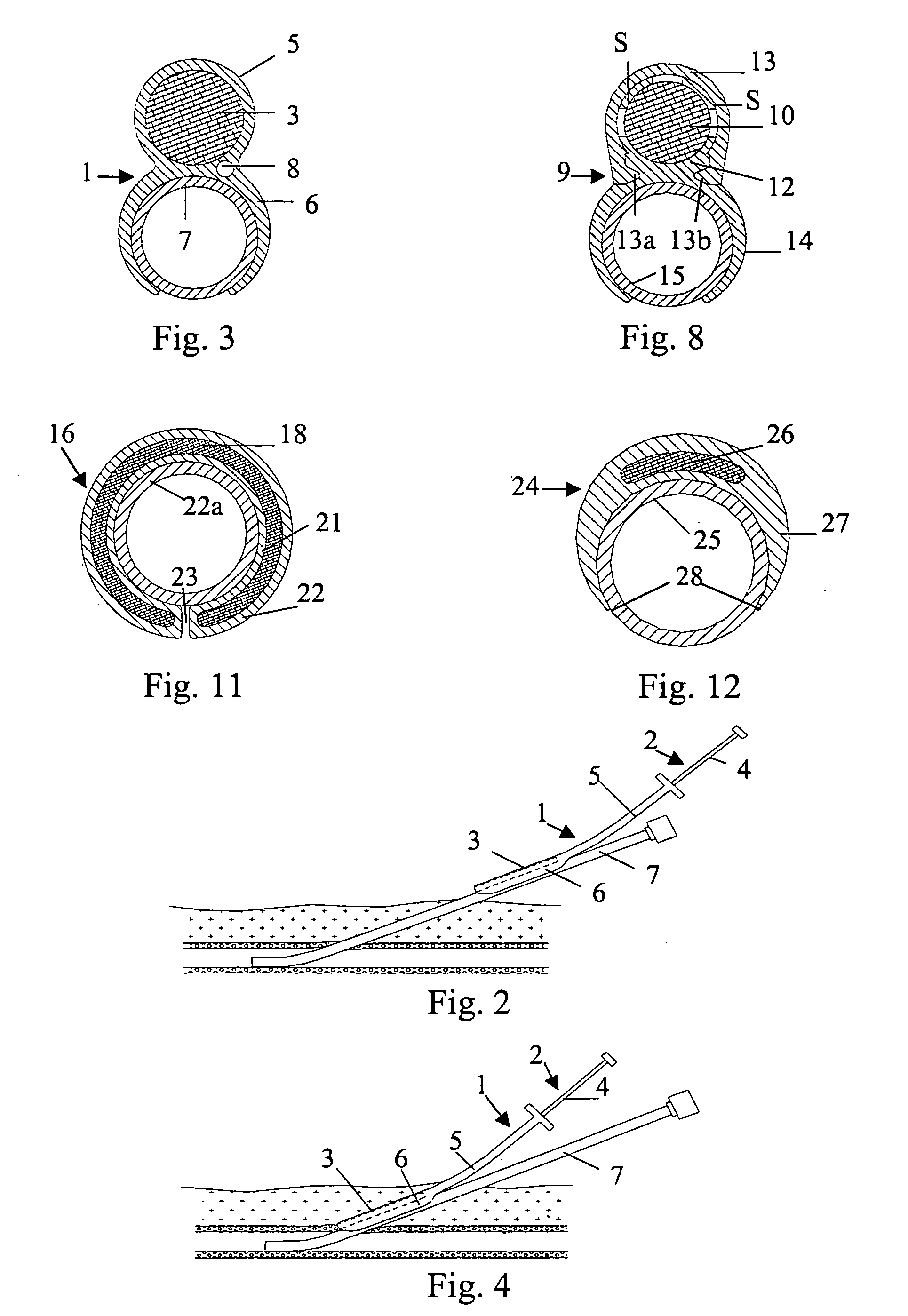Closure device
- Summary
- Abstract
- Description
- Claims
- Application Information
AI Technical Summary
Benefits of technology
Problems solved by technology
Method used
Image
Examples
first embodiment
[0026] In FIG. 1 is illustrated a closure device 1 according to the present invention. The closure device 1 comprises an elongated insertion assembly 2 and a haemostatic or sealing material 3, which is contained in the distal portion of the insertion assembly 2. Preferably the haemostatic material 3 is impregnated or in some other way provided with a suitable clotting agent such as thrombin. The insertion assembly 2, in turn, comprises two parts, an elongated stationary part 4 and an elongated retractable part 5. Basically, the stationary part 4 has the shape of a rod, the distal end of which is in contact with the haemostatic material 3, and the retractable part 5 is in the form of a hollow sheath, which is in slidable engagement with the outside of the stationary part 4. Parts 4 and 5 may be made from any suitable material, such as plastic or metal. In FIG. 1, the closure device 1 is depicted in an initial state, with the distal portion of the retractable part 5 extending from the...
third embodiment
[0038] In the embodiments shown in FIG. 1 and FIG. 7, respectively, the closure devices have been provided with an attachment means, such as attachment members 6 and 14, that virtually operates a separate part of the insertion assembly, i.e. the elongated insertion assembly slides as a separate part on the outside of the introducer. This is not to say that the attachment member actually is provided as a separate part to an existing insertion assembly, or that the attachment member has to be manufactured in a separate manufacturing step. In FIG. 10 is shown a closure device 16. The closure device 16 comprises an elongated insertion assembly 17 and a charge of a haemostatic material 18. The insertion assembly 17, in turn, comprises an elongated stationary part 19 and an elongated retractable part 20. The retractable part 20 is in the form of a hollow sheath having an inner wall 21 and an outer wall 22. The charge of haemostatic material 18 is disposed between the inner wall 21 and the...
fourth embodiment
[0040] In FIG. 12 is shown the cross-section of a closure device 24 connected to an introducer 25. The closure device 24 comprises a haemostatic material 26, which is contained in the distal portion of a retractable part 27. In this embodiment, the retractable part 27 has basically the form of a hollow sheath, with a rather large portion being cut away along its length. This cut-away portion (indicated with reference numeral 28) replaces the more narrow slit 23 described above in connection with FIG. 10 and FIG. 11. The wall of the hollow sheath that basically constitutes the retractable part 27 becomes thinner towards its longitudinal edges, thereby making it easy to thread the insertion assembly onto an introducer. Further, a cavity, which extends along the length of the retractable part 27, is provided opposite to the cut-away portion 28, where the wall of the retractable part 27 has its largest thickness. This cavity, in which the haemostatic material 26 is contained, occupies o...
PUM
 Login to view more
Login to view more Abstract
Description
Claims
Application Information
 Login to view more
Login to view more - R&D Engineer
- R&D Manager
- IP Professional
- Industry Leading Data Capabilities
- Powerful AI technology
- Patent DNA Extraction
Browse by: Latest US Patents, China's latest patents, Technical Efficacy Thesaurus, Application Domain, Technology Topic.
© 2024 PatSnap. All rights reserved.Legal|Privacy policy|Modern Slavery Act Transparency Statement|Sitemap



